Top 5 tools for communication improvement in remote teams

Remote work has transformed the way organizations operate, offering unparalleled flexibility and access to a global talent pool. However, this shift has also introduced significant challenges, particularly in maintaining effective communication among team members who are often scattered across different time zones and cultural backgrounds. Achieving seamless communication is not just desirable but essential for the success of remote teams.
In this article, we will explore the top five tools that can dramatically enhance communication in remote teams, boosting collaboration, productivity, and overall engagement. Before we talk about these tools, let's examine some real-world case studies and the specific communication challenges that remote teams frequently encounter.
The challenges of remote team communication
Time zone differences
Imagine a team spread across continents, with members starting their workday just as others are ending theirs. Coordinating across multiple time zones often means someone has to stay up late or wake up early for meetings. This can lead to fatigue, reduce productivity, and make synchronous communication a logistical nightmare. For instance, a project update that’s urgent for a team member in New York might reach their colleague in Sydney the next day, causing delays.
Cultural differences
Working in a diverse team is enriching but also challenging. Different cultural backgrounds bring varied communication styles and etiquettes. For example, a straightforward comment from a colleague in Germany might be perceived as blunt by a team member in Japan, who might prefer a more nuanced approach. These differences can lead to misunderstandings and friction if not managed carefully.
Lack of non-verbal cues
Communication is not just about words; it’s also about body language, facial expressions, and tone of voice. In a remote setup, these non-verbal cues are often missing, especially in text-based communications like emails or chat messages. This absence can lead to misinterpretations. For example, a message intended to be neutral might be perceived as curt or rude, causing unnecessary tension.
Technology barriers
Not everyone is a tech wizard, and disparities in digital literacy can create significant barriers. While one team member might navigate complex software with ease, another might struggle with basic functionalities. Additionally, inconsistent access to reliable internet or up-to-date hardware can further exacerbate these issues, making seamless communication difficult.
Isolation and engagement
Remote work, despite its flexibility, can be lonely. Without the casual water-cooler conversations and spontaneous brainstorming sessions, team members can feel isolated. This sense of isolation can lead to disengagement, lower morale, and decreased productivity. For instance, a remote employee might miss out on the camaraderie and support that naturally occur in an office setting, making it harder to stay motivated and connected to the team’s goals.
Strategies for communication improvement in remote teams
Effectively managing remote communication requires a thoughtful approach and strategic implementation. Here are some key strategies to help enhance communication within remote teams, ensuring everyone stays connected, aligned, and productive.
Establish clear protocols
Imagine the chaos if everyone in a team uses different channels for the same type of communication. To avoid this, it's crucial to define clear guidelines for how and when to use various communication channels. For instance, use email for formal updates, a messaging app like Slack for quick questions, and video calls for in-depth discussions. By setting these protocols, you ensure everyone is on the same page and communication flows smoothly.
Regular check-ins
Regular check-ins are the heartbeat of remote team communication. Schedule frequent meetings, whether they are daily stand-ups, weekly syncs, or monthly reviews, to keep everyone aligned and engaged. These meetings provide a platform for team members to share updates, discuss challenges, and celebrate successes, fostering a sense of unity and purpose.
Encourage open dialogue
A healthy communication culture is built on trust and openness. Encourage your team members to share their ideas, feedback, and concerns without fear of judgment. This can be achieved through anonymous feedback channels, regular team-building activities, and an inclusive leadership approach that values each member's input. Open dialogue not only fosters creativity but also helps identify and resolve issues early.
Use the right tools
The right tools can make or break remote communication. Invest in tools that are tailored to your team’s specific needs. For example, project management software like Trello can keep tasks organized, presentation tools like Prezent can strengthen business communication among different stakeholders, and collaboration tools like Microsoft Teams or Zoom can facilitate seamless interactions. By choosing tools that match your team’s workflow, you can enhance efficiency and productivity.
Provide training
Not everyone is a natural at using digital tools, and even those who are can benefit from training. Ensure that all team members are proficient in using the communication tools at their disposal. Offer training sessions that cover best practices, advanced features, and troubleshooting tips. This not only boosts confidence but also ensures that everyone can communicate effectively, minimizing misunderstandings and technical hiccups.
Top 5 tools for communication improvement in remote teams
1. Prezent
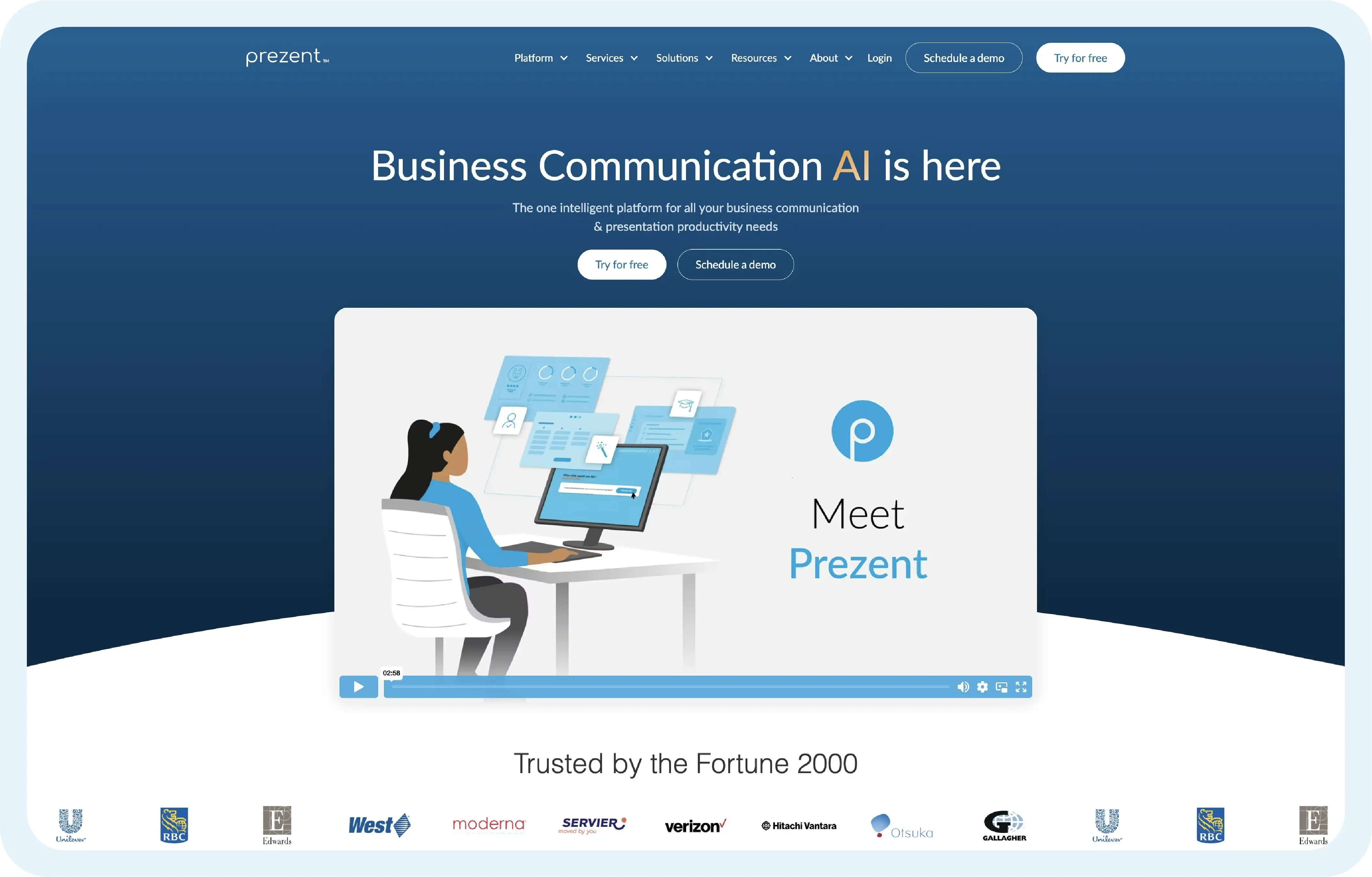
Prezent is an AI-powered platform that revolutionizes business communication by streamlining the creation of presentations. It's tailored for enterprise teams, enabling them to produce hyper-personalized, on-brand presentations swiftly.
Key features:
- AI-driven automation: Prezent uses ASTRID AI to automate the creation of content and transform data into visually engaging presentations. This feature includes smart suggestions for text, images, and layouts, ensuring that each presentation is both informative and captivating.
- Audience empathy: The platform emphasizes understanding and engaging with the unique preferences of diverse audiences, which is crucial for effective communication. It helps in crafting messages that resonate deeply with the target audience.
- Structured storytelling: Prezent offers tools to build compelling narratives, ensuring that the message is clear and impactful.
- Comprehensive libraries: Users have access to an extensive library of over 35,000 slides and 1,000+ expert-curated storylines, providing a wealth of resources for creating compelling presentations.
- Customization: Provides hyper-personalized templates that can be tailored to specific audience preferences. This means that presentations can be customized based on the audience’s interests, making them more relevant and engaging.
- Learning modules: The platform includes gamified learning modules aimed at enhancing communication skills. These modules cover best practices in presentation design and delivery, helping users continually improve their skills.
- Communication fingerprints: This unique feature helps users understand and compare their colleagues' communication preferences, providing actionable insights to tailor presentations for maximum impact.
Benefits:
- Time efficiency: Prezent can save up to 90% of the time typically spent on creating presentations, allowing team members to focus on other critical tasks. This is particularly beneficial in fast-paced environments where time is of the essence.
- Cost reduction: By streamlining the presentation creation process, Prezent reduces the costs associated with communication efforts. This includes savings on design resources and the reduced need for extensive revisions.
- Engagement: The tool’s ability to create visually engaging and well-structured presentations helps improve understanding and retention of the presented information. Engaging presentations can lead to better audience response and increased impact.
Use case: Prezent is ideal for enterprises looking to enhance both internal and external communication. It ensures that all messages are delivered consistently, professionally, and impactfully. This makes it a valuable asset for teams that frequently need to create high-quality presentations, such as marketing, sales, and corporate communications teams.
In-depth insight:
- User experience: Users often praise Prezent for its intuitive interface and ease of use. The AI-driven automation is particularly highlighted for reducing the time and effort required to create complex presentations.
- Integration: Prezent integrates seamlessly with other tools commonly used in enterprises, such as Microsoft Office Suite and Google Workspace. This makes it easy to incorporate Prezent into existing workflows without significant disruption.
- Support and training: Prezent offers robust customer support and extensive training resources. This includes webinars, tutorials, and one-on-one training sessions to ensure that all team members can fully leverage the platform’s capabilities.
Conclusion: By incorporating Prezent into your remote communication toolkit, you can transform how your team creates and delivers presentations, making your communication more effective and your team more productive. This tool is particularly beneficial for large enterprises where maintaining brand consistency and efficiency is crucial.
2. Slack
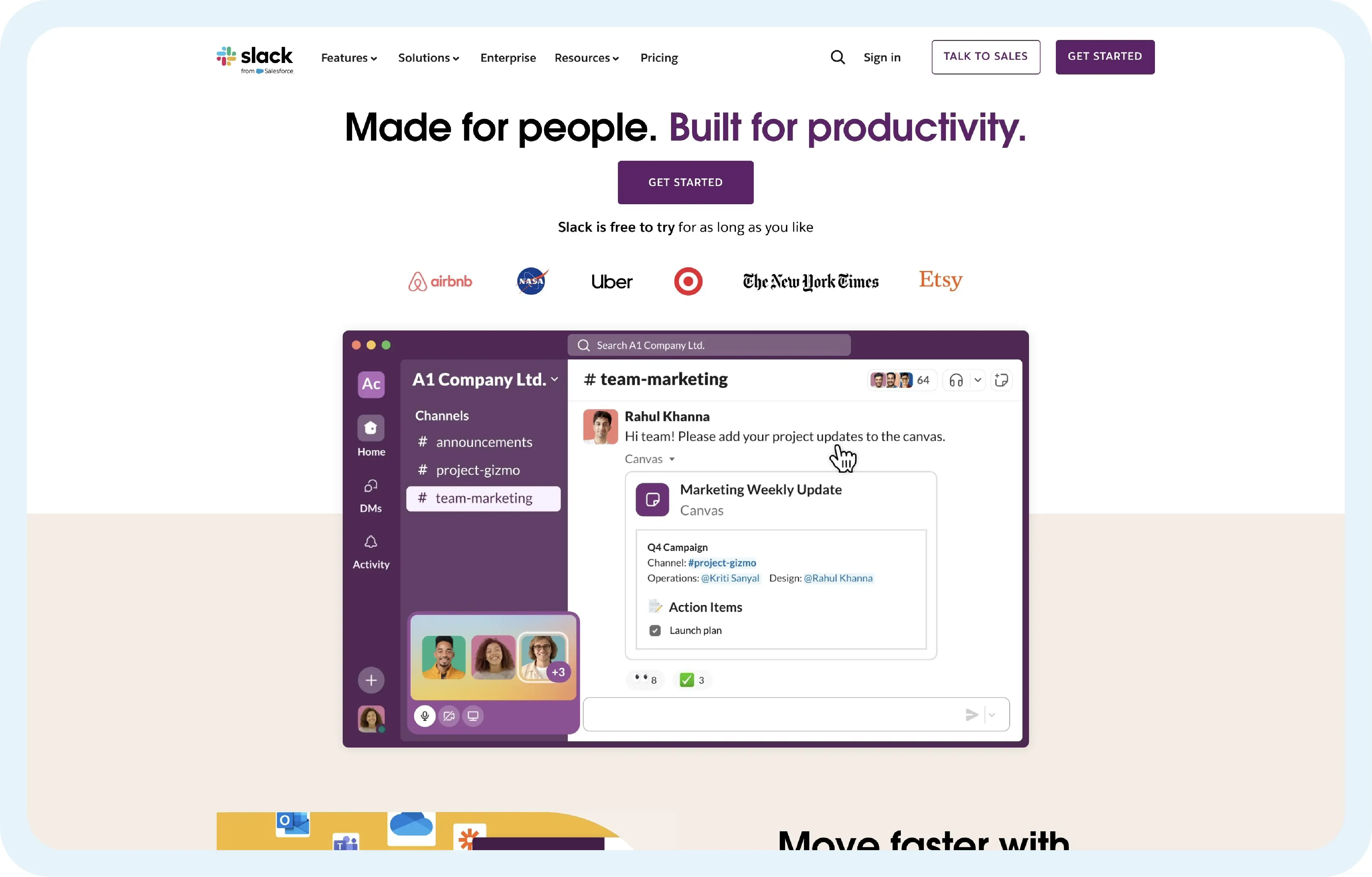
Slack is a widely used communication platform designed to centralize team interactions, offering real-time messaging, file sharing, and searchable archives. It's known for its user-friendly interface and robust integration capabilities, making it an essential tool for remote teams.
Key features:
- Channels: Slack allows teams to create channels for different topics, projects, or departments. This feature helps organize conversations, ensuring that discussions remain focused and relevant. For example, a marketing team might have separate channels for social media strategies, content planning, and campaign tracking.
- Integration: One of Slack's strengths is its ability to integrate with over 2,600 third-party tools such as Google Drive, Trello, Asana, and many others. This integration means that teams can collaborate more efficiently by accessing documents, managing tasks, and updating project statuses directly within Slack.
- File sharing: Slack simplifies file sharing by allowing users to drag and drop documents, images, and videos directly into the chat. This feature supports collaboration by making it easy for team members to share resources and feedback in real time.
- Searchable history: Slack maintains a comprehensive archive of all conversations and shared files, which can be easily searched. This ensures that important information is always accessible, even if it was shared months ago, helping to maintain transparency and continuity.
- Voice and video calls: Beyond text-based communication, Slack also supports voice and video calls. This feature is useful for quick check-ins, team meetings, or one-on-one conversations, providing a versatile communication solution for various needs.
Benefits:
- Collaboration: Slack enhances team collaboration by facilitating quick and effective communication. Its real-time messaging and file-sharing capabilities enable team members to coordinate tasks and projects efficiently.
- Transparency: By centralizing all communication in one platform, Slack helps ensure that everyone is informed and aligned. Channels make it easy for team members to access the same information, reducing the likelihood of miscommunication.
- Accessibility: Slack is available on multiple platforms, including desktop and mobile devices, allowing team members to stay connected from anywhere. This flexibility is particularly beneficial for remote teams, ensuring consistent communication regardless of location.
Use case: Slack is ideal for remote teams that require constant, real-time communication and collaboration. Its extensive features support a dynamic and flexible working environment, making it easier for teams to stay connected, organized, and productive.
In-depth insight:
- User experience: Slack is praised for its intuitive interface and ease of use. The platform's design facilitates quick adoption, and its integration capabilities enhance the overall user experience. Features like custom emojis and GIFs also contribute to a more engaging and enjoyable communication environment.
- Customization: Slack offers a range of customization options. Teams can set custom notifications, create unique channels, and use Slackbot to automate routine tasks. These features allow teams to tailor the platform to their specific needs, improving efficiency and user satisfaction.
- Security: Slack provides enterprise-grade security, including data encryption, compliance certifications, and advanced identity management. These measures ensure that all team communications and data are protected.
Conclusion: By incorporating Slack into your remote communication toolkit, you can improve how your team interacts, collaborates, and manages projects. Its comprehensive features and seamless integrations make it an indispensable tool for modern remote teams looking to maintain high levels of productivity and cohesion.
3. Zoom
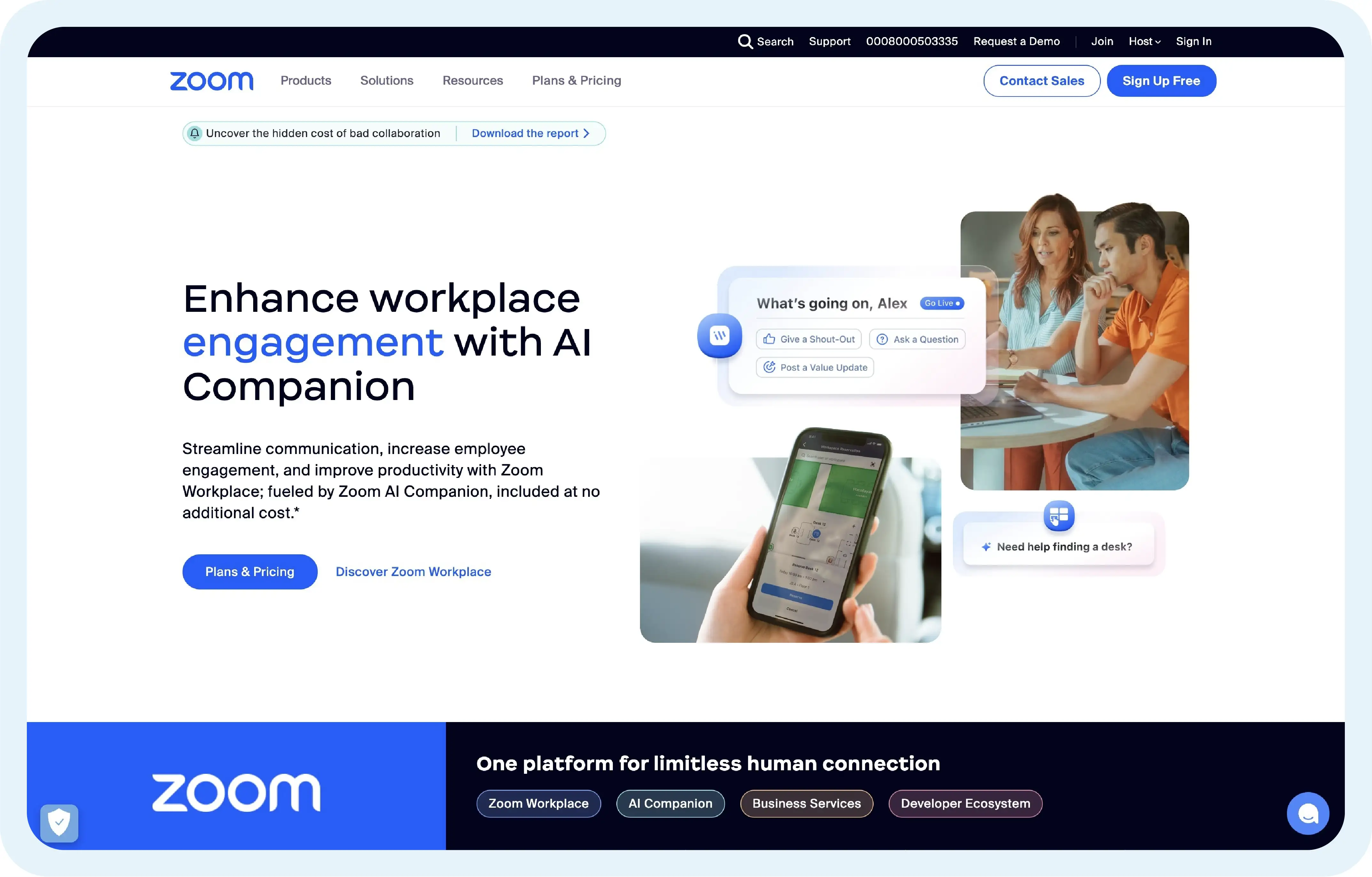
Zoom is a premier video conferencing tool recognized for its high-quality video, audio, and collaboration features. It is ideal for virtual meetings, webinars, and training sessions, making it a versatile solution for various communication needs.
Key features:
- HD video and audio: Zoom delivers exceptional high-definition video and audio quality, ensuring clear and professional communication. This high-quality experience is crucial for maintaining effective meetings, especially in professional settings where clarity is essential.
- Screen sharing: Zoom's screen sharing feature allows participants to share their screens effortlessly, making it ideal for presentations, demonstrations, and collaborative work. This feature enhances productivity by enabling real-time sharing and collaboration on documents and presentations.
- Breakout rooms: This feature is particularly useful for dividing a large meeting into smaller, focused groups. Breakout rooms facilitate in-depth discussions and workshops by allowing participants to collaborate in smaller settings before returning to the larger group.
- Recording: Zoom offers the capability to record meetings, which can be saved locally or in the cloud. This is invaluable for those who need to review meetings later, share sessions with absent team members, or keep records for training purposes.
- Integration: Zoom integrates seamlessly with a wide range of calendar applications and productivity tools, including Google Calendar, Microsoft Outlook, and Slack. These integrations streamline the scheduling and joining of meetings, enhancing workflow efficiency and ensuring that meetings are well-organized.
Benefits:
- Face-to-face interaction: Zoom enhances communication through visual cues and non-verbal communication, which are crucial for effective interaction. The ability to see each other’s facial expressions and body language helps in understanding and building rapport among team members.
- Flexibility: Zoom supports a variety of meeting sizes and types, from one-on-one calls to large webinars with thousands of participants. This flexibility makes it suitable for numerous use cases, whether it’s a small team meeting or a large-scale virtual event.
- Engagement: Zoom's interactive features, such as polling, Q&A, and reactions, help keep participants engaged during meetings. These tools make it easier to gather feedback, facilitate discussions, and maintain interest throughout the session.
Use case: Zoom is ideal for remote teams that require reliable video conferencing for various types of meetings, including daily stand-ups, client meetings, training sessions, and large webinars. Its comprehensive feature set and ease of use make it a go-to solution for enhancing remote communication and collaboration.
In-depth insight:
- User experience: Users appreciate Zoom for its intuitive interface and reliability. The platform is easy to navigate, even for those who are not particularly tech-savvy, which has contributed to its widespread adoption across different industries.
- Security: Zoom has significantly improved its security features, offering end-to-end encryption, waiting rooms, and the ability to lock meetings once they have started. These features help protect against unauthorized access and ensure that meetings are secure.
Conclusion: By integrating Zoom into your remote communication toolkit, you can ensure high-quality, reliable video conferencing that supports a wide range of business needs. Its powerful features and user-friendly interface make it an indispensable tool for modern remote teams looking to maintain effective communication and collaboration
4. Trello
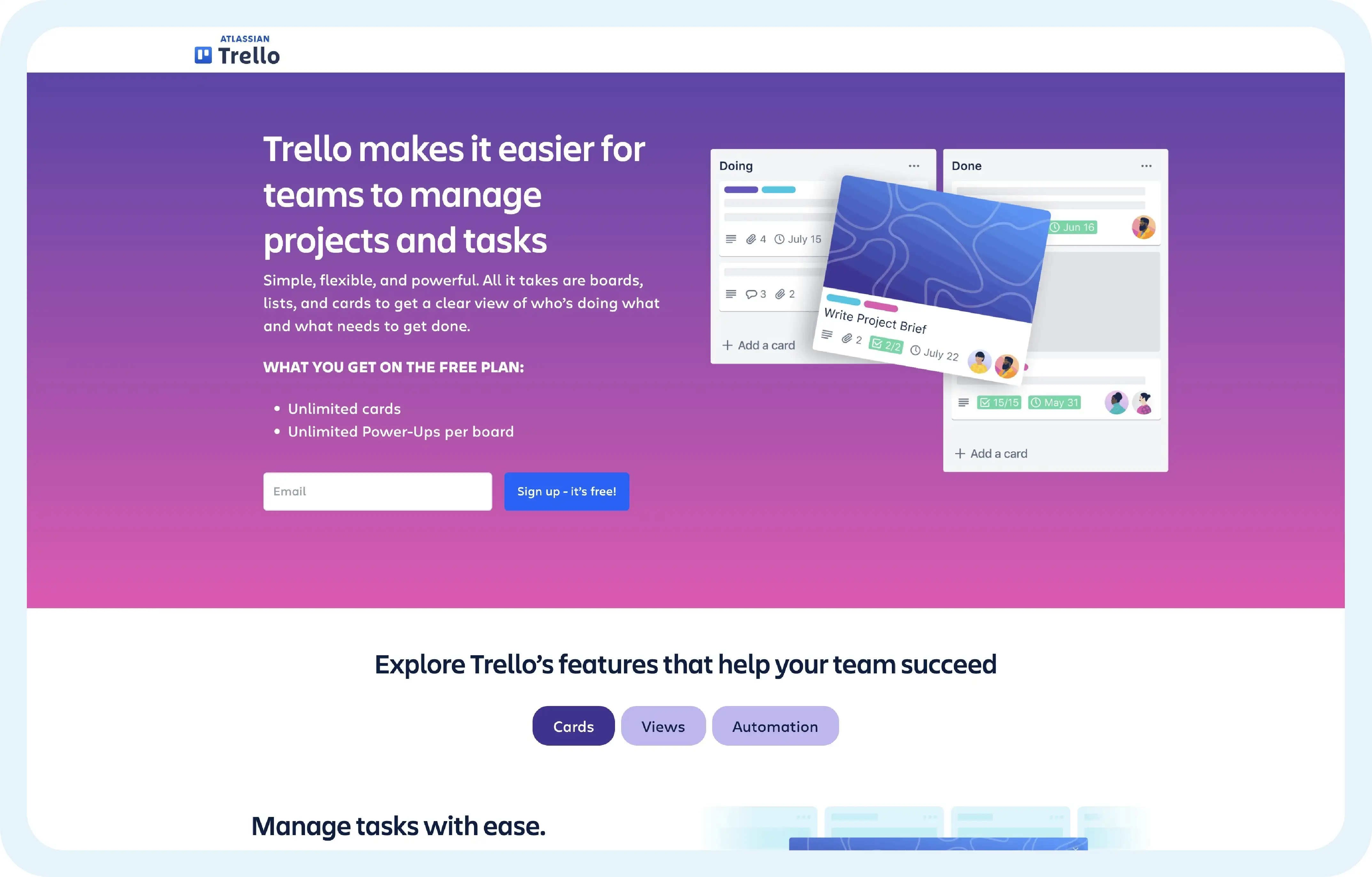
Trello is a highly visual project management tool that leverages boards, lists, and cards to help teams organize and prioritize tasks and projects. It's designed to adapt to various workflows, making it an excellent choice for teams looking for a flexible and intuitive project management solution.
Key features:
- Boards and cards: Trello uses a board and card system to visually organize tasks. Boards represent projects, lists indicate different stages of progress, and cards represent individual tasks that can be moved across lists as they progress. This structure helps teams get a clear overview of the project at a glance.
- Labels and tags: Trello allows users to add labels, tags, and due dates to cards, which helps in prioritizing tasks and organizing work more effectively. Color-coded labels can signify the status or type of task, making it easier to manage at a glance.
- Collaboration: Trello enhances collaboration by allowing team members to comment on cards, attach files, and set deadlines. The ability to add detailed descriptions, checklists, and comments ensures that all relevant information is kept in one place, facilitating better communication and coordination.
- Integration: Trello integrates with numerous other tools such as Slack, Google Drive, and Evernote. These integrations enable teams to streamline their workflow by connecting Trello with the apps they already use, ensuring that all project-related activities are centralized.
- Automation: Trello's Butler feature allows users to automate repetitive tasks. This no-code automation tool can perform various functions, such as moving cards between lists, creating custom buttons for specific tasks, and setting reminders for upcoming deadlines, which significantly enhances productivity.
Benefits:
- Visual organization: Trello's visual approach to project management makes it easy to see the status of tasks and projects at a glance. This clarity helps teams stay organized and ensures that everyone is aware of their responsibilities and deadlines.
- Flexibility: Trello is highly adaptable and can be customized to fit various project management styles and workflows. Whether you're managing a small project or a complex workflow, Trello provides the tools needed to keep everything on track.
- Collaboration: Trello promotes real-time collaboration by keeping all communication and project details in one place. Team members can easily track progress, provide feedback, and stay updated on any changes, which enhances overall team efficiency.
Use case: Trello is ideal for teams that prefer a visual and flexible approach to project management. It's particularly useful for creative teams, marketing projects, software development, and any other scenario where visual task tracking and flexible workflows are beneficial.
Conclusion: By integrating Trello into your project management toolkit, you can enhance how your team organizes, tracks, and collaborates on tasks and projects. Its user-friendly interface, powerful features, and extensive customization options make it a versatile and indispensable tool for modern teams looking to improve their productivity and project management capabilities.
5. Asana
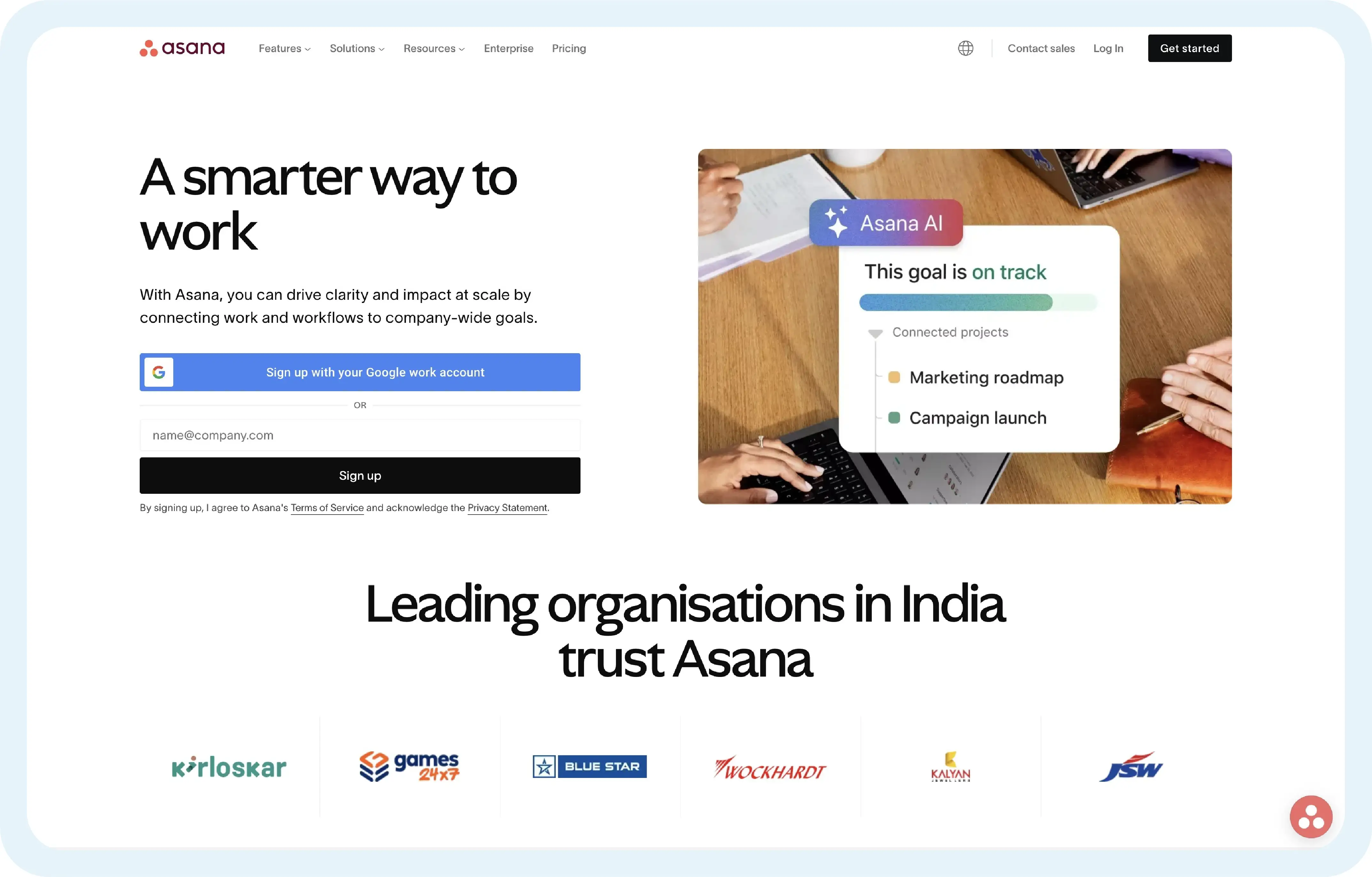
Asana is a robust project management tool designed to help teams organize, track, and manage their work. It enhances collaboration, ensures tasks are completed on time, and provides visibility into project progress.
Key features:
- Task management: Asana allows users to create, assign, and track tasks and subtasks easily. Tasks can include detailed descriptions, attachments, due dates, and assignees, ensuring everyone knows what needs to be done and by when.
- Project timelines: With Gantt chart-style project timelines, Asana provides a visual representation of project schedules. This helps teams to see how tasks overlap, identify dependencies, and adjust timelines as needed to keep projects on track.
- Collaboration: Team members can comment on tasks, attach files, and set deadlines within Asana. This centralizes communication and documentation, making it easier to collaborate without needing multiple tools.
- Customizable dashboards: Asana’s dashboards allow users to monitor project progress through custom, real-time charts and reports. These dashboards help identify bottlenecks and track overall project health at a glance.
- Integration: Asana integrates with numerous other tools, including Slack, Google Drive, and Dropbox, enabling seamless collaboration and ensuring that all project-related activities are centralized
Benefits:
- Organization: Asana helps teams stay organized by providing a clear structure for tasks and projects. This structure ensures that everyone knows their responsibilities and can prioritize their work effectively.
- Transparency: With Asana, teams have visibility into project progress and individual workloads. This transparency helps in identifying potential issues early and allows for better resource management and planning.
- Flexibility: Asana is highly adaptable to various workflows and project management styles, from Agile to Waterfall. Its customizable features allow teams to tailor it to their specific needs and processes.
Use case: Asana is ideal for teams that need to manage multiple projects and tasks efficiently. It is particularly useful for remote teams that require a reliable system to track progress, collaborate in real-time, and ensure accountability. Whether you are working on product launches, marketing campaigns, or general team management, Asana provides the tools necessary to enhance productivity and collaboration.
Conclusion: By integrating Asana into your project management toolkit, you can streamline your workflows, improve team collaboration, and ensure that all tasks and projects are completed efficiently and on time. Its powerful features and intuitive interface make it an indispensable tool for modern teams looking to maintain high levels of productivity and organization.
Frequently asked questions (FAQs)
1. What are some effective communication strategies to improve your communication skills in the workplace?
To enhance your communication skills, focus on active listening, maintaining eye contact, and using concise language. Establishing a workplace communication strategy that encourages constructive feedback can also help.
2. How can I improve communication in a hybrid work environment?
In a hybrid setting, leverage both in-person communication and digital communication tools. Ensure that all team members have equal opportunities to express their ideas, thereby building trust and psychological safety within the group.
3. Why is active listening essential for great communication?
Active listening allows you to fully understand what the speaker is conveying, minimizing the chances of unclear communication. It demonstrates respect and engagement, making it easier for the other person to share their thoughts without distraction.
4. How do nonverbal behaviors impact communication effectiveness?
Nonverbal signals, such as eye contact and body language, play a crucial role in expressing emotions and intentions. Being aware of these behaviors can help you convey your message more effectively and anticipate any potential misunderstandings.
5. What tactics can managers use to enhance workplace communication?
Managers should prioritize creating a safe space for team discussions. This can be achieved by encouraging open dialogue, providing constructive feedback, and taking the time to summarize key points during meetings to ensure everyone is aligned.

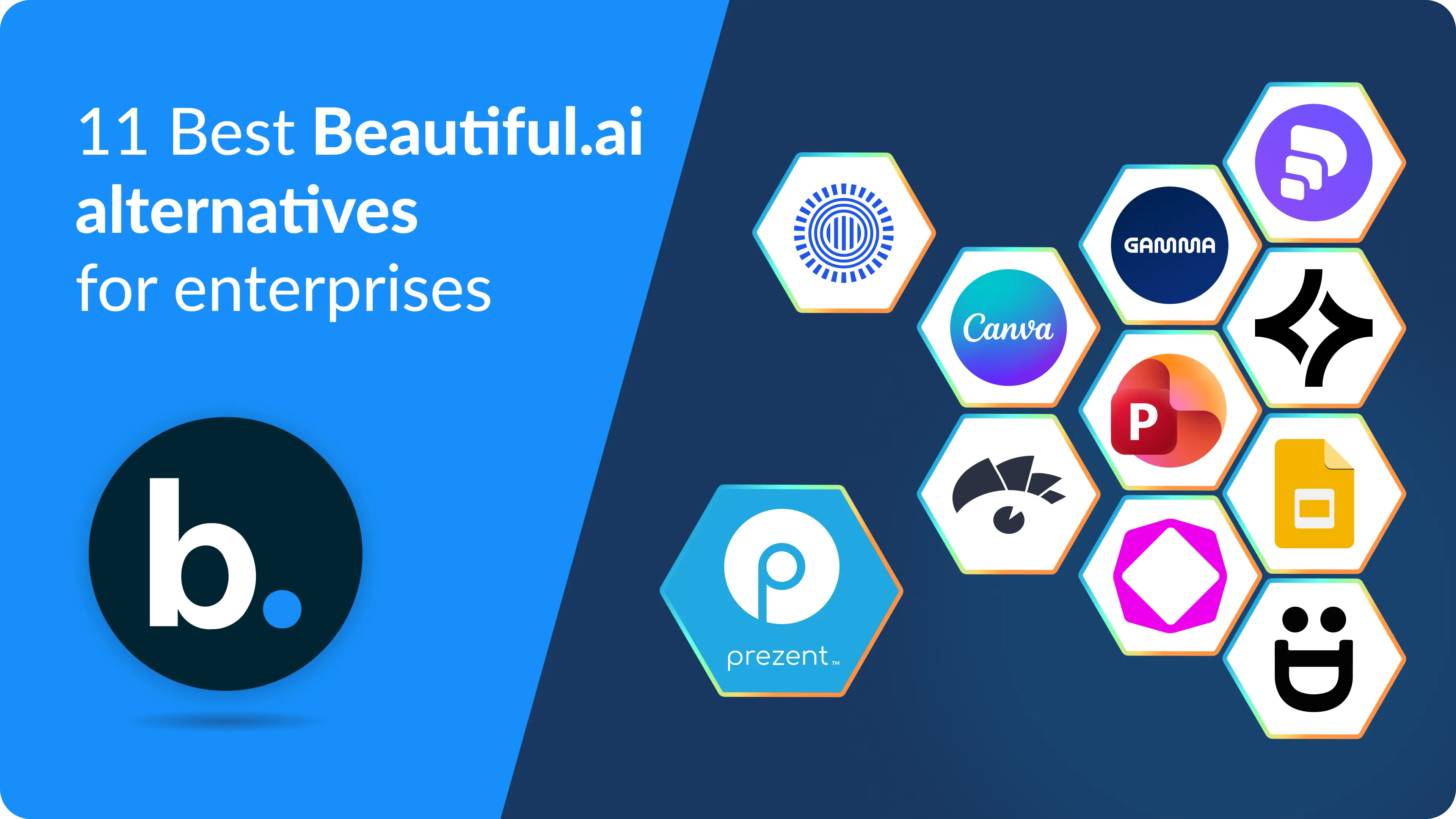
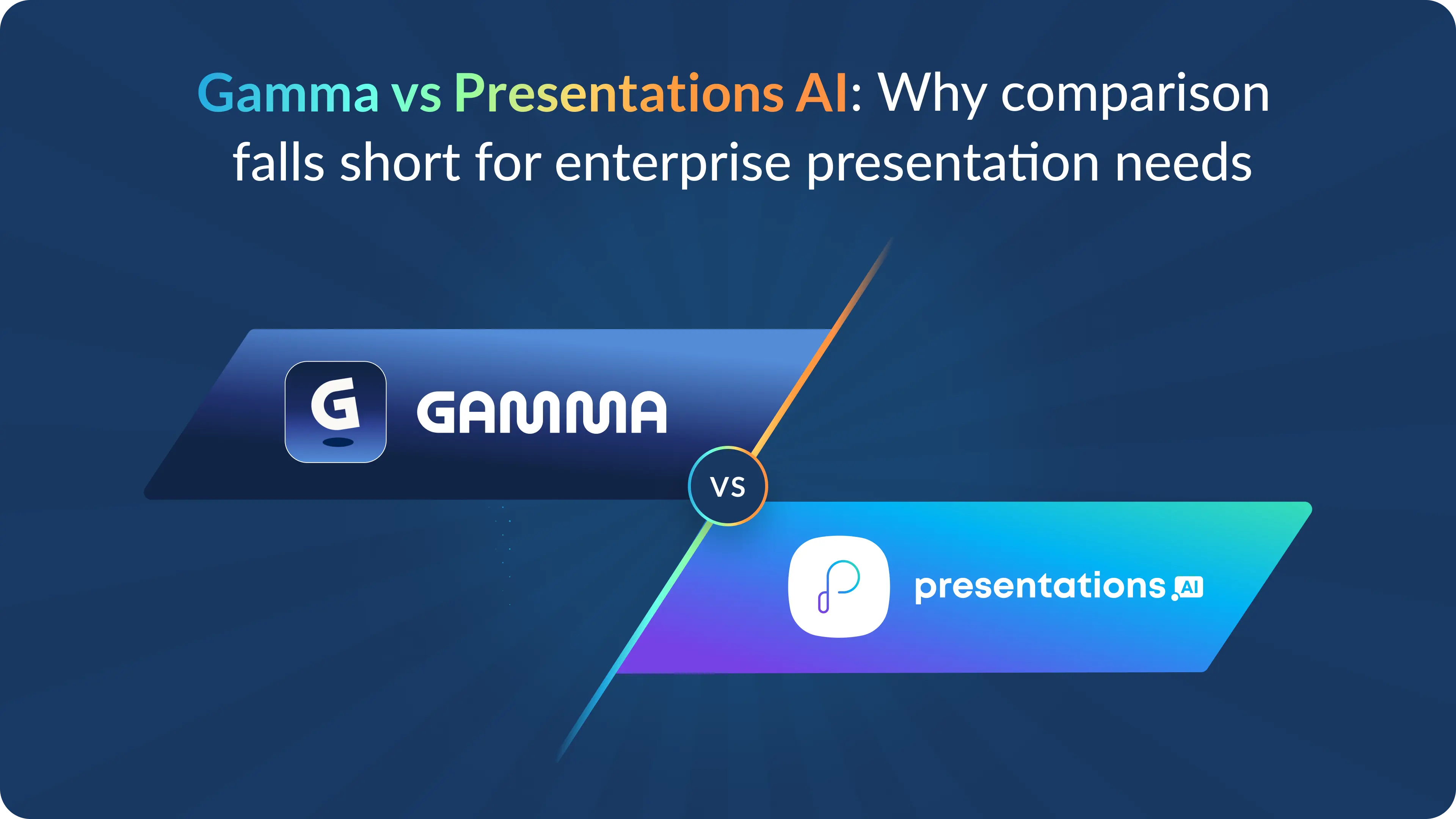








.avif)
